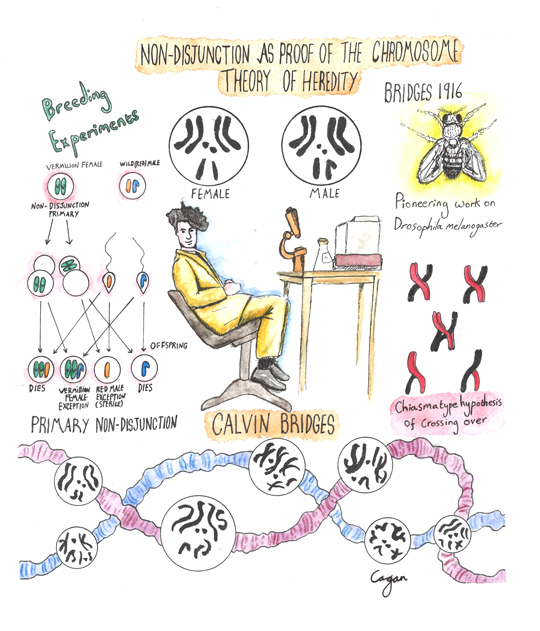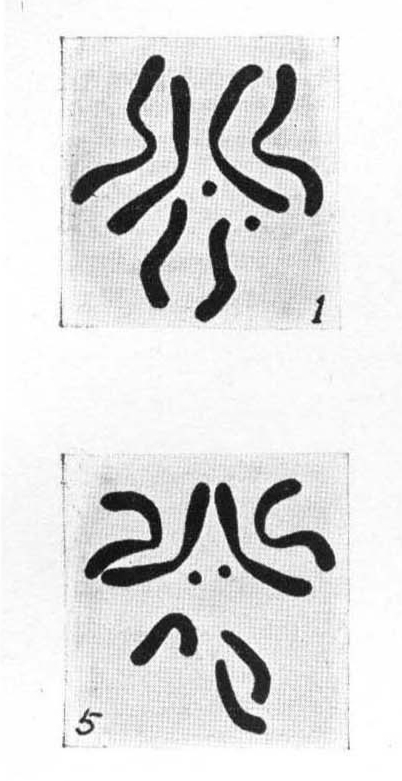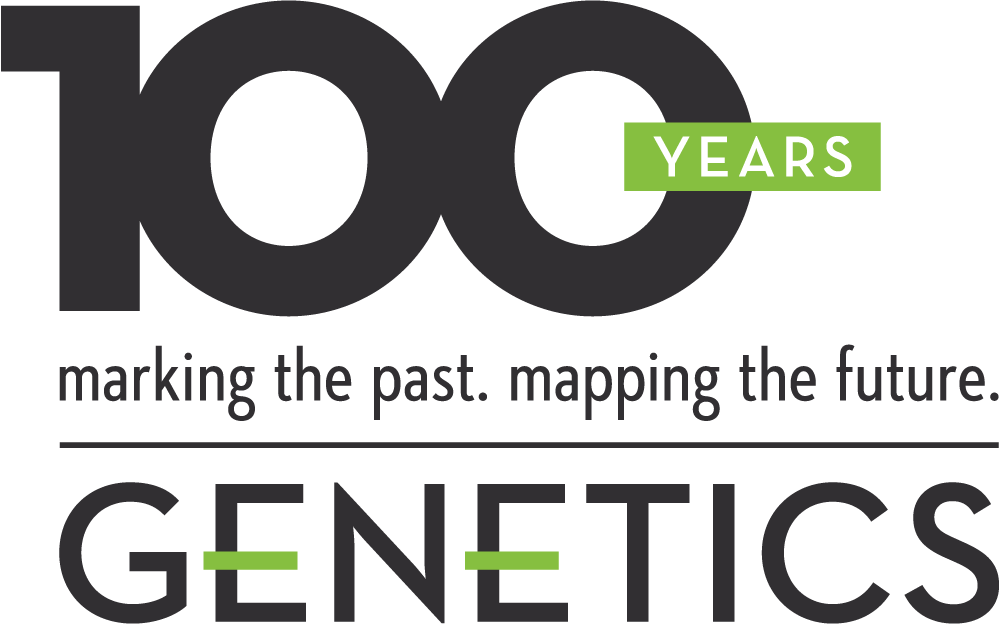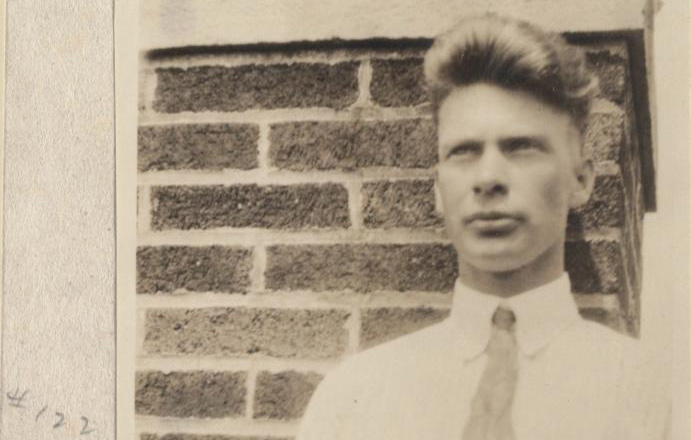When sharp-eyed 20-year-old Calvin Bridges entered Columbia University in 1909, the word “gene” had just been coined. At that time, the term was profoundly abstract, referring to “factors” or “conditions” that could be glimpsed only through the window of statistical analysis.
Seven years later, Bridges and his colleagues had brought these mysterious factors firmly down to earth, pinning them to a concrete location in the cell. Bridges’s groundbreaking 1916 PhD thesis was the first article ever published in GENETICS and presented the final confirmation that genes lie on chromosomes. In a special 100th anniversary Perspectives article in the January 2016 issue of GENETICS, Barry Ganetzky and Scott Hawley describe the background of this seminal work and trace its lasting impact on modern research.
At Columbia, Bridges joined a group of energetic young scientists who inhabited Thomas Hunt Morgan’s tiny “Fly Room” and studied the fruit fly Drosophila melanogaster. Beginning in 1910, Morgan and his students began to realize the chromosome theory of inheritance first proposed by Theodor Boveri and Walter Sutton aligned perfectly with their observations in Drosophila. But although the parallels between the inheritance of chromosomes and genes were convincing, it took an imaginative leap from Bridges to provide an example that unambiguously tied inheritance of specific genes to a specific chromosome.

January cover artist Alexander Cagan’s take on Bridges 1916.
Bridges had been working on sex-linked traits when he noticed rare flies that deviated from the usual rules of heredity. These were females that had inherited all their sex-linked traits from their mothers, and males with all the sex-linked traits from their fathers. Rather than ignoring these exceptions as meaningless flukes, Bridges hypothesized they were the result of an error in the distribution of the sex-linked X chromosome during meiosis. If the two homologous X chromosomes failed to separate during the first phase of meiosis, the resulting egg would contain either both of the X chromosomes, or neither (a single X is normal). Based on this idea, Bridges predicted that the offspring of the exceptional females would include XXY daughters — a configuration that had never been seen before. Sure enough, under the microscope, some of the flies clearly carried two X’s and a Y.

Detail of Plate 1 from Bridges 1916b. Top sketch shows the three autosomes (including the pair of “dot” chromosomes) of a wild-type female, plus a pair of X chromosomes. Bottom sketch shows chromosomes from a daughter of an “exceptional” mother (i.e. one that inherited sex-linked traits only from her own mother). An additional J-shaped Y chromosome is clearly visible.
Bridges’s GENETICS article lay the groundwork for much of the century of genetics that followed, not only by confirming the chromosome theory of inheritance, but by providing the foundation for our understanding of sex determination and meiosis. After this momentous start, Bridges went on to shape the field in many other important ways, including leading the effort to map thousands of Drosophila genes to the bands visible in preparations of giant salivary gland polytene chromosomes. For this contribution, Ganetzky and Hawley refer to Bridges as the founding father of modern genomics. He also used his skill as an inventor (his hobby was building a futuristic car called “the Lightning Bug”) to make it easier to work with Drosophila, introducing the binocular microscope, synthetic fly food, anesthesia, and designing custom incubators and culture bottles.
When Morgan eventually won the 1933 Nobel Prize in Physiology or Medicine for “his discoveries concerning the role played by the chromosome in heredity,” he acknowledged the vital contributions of Bridges and close colleague Alfred Sturtevant by sharing the prize money with their children.
For more on the 100th anniversary of GENETICS, visit the freshly redesigned journal website. For more about the work and life of Bridges, check out Cold Spring Harbor Laboratory’s absorbing online exhibit Calvin Blackman Bridges Unconventional Geneticist (1889-1938). Subscribe to Genes to Genomes for much more on the 100th anniversary of GENETICS!

CITATIONS:
Bridges, C. B. (1916). Non-disjunction as proof of the chromosome theory of heredity. Genetics, 1(1), 1-52.
http://www.genetics.org/content/1/1/1.full.pdf+html
Bridges, C. B. (1916). Non-disjunction as proof of the chromosome theory of heredity (concluded). Genetics, 1(2), 107-163
http://www.genetics.org/content/1/2/107.full.pdf+html














